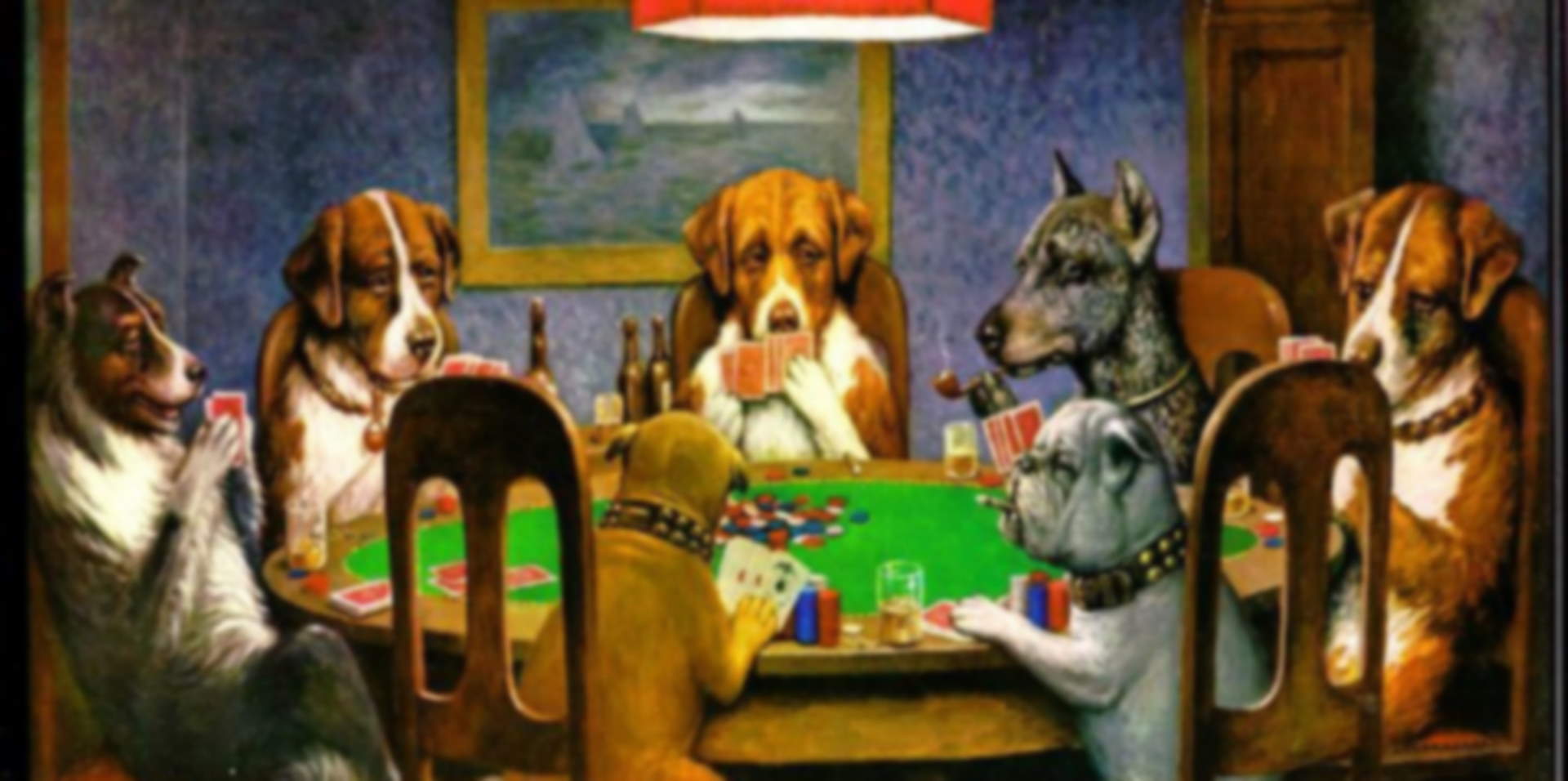

One has to do with the question of whether you should avoid calling someone else’s bet early in the tournament, getting slightly better than proper pot odds, if that call substantially increases your risk of going broke. Of course this question is more germane to no-limit tournaments but it can apply somewhat to limit tournaments as well.
It is common knowledge that you should avoid these close calls late in a tournament because of the way prizes are paid. Keeping a few chips might make the difference of a lot of money to you, if you have reached the right table. Those few chips allow you to move up the prize ladder if larger stacks get into a confrontation. But this factor is not relevant early in a tournament. In spite of that it may still be right to avoid certain close gambles early that might occur if you were one of the best players in the tournament. In that case you might argue that when you put yourself in danger of going broke, you risk not only your chips but also the opportunity to play longer with your skill edge. Is that argument logically sound? Can giving up good bets ever be right?
Another thing that comes up in tournaments that almost never comes up in side games is the situation of having a tiny stack with your blind about to come up in one or two hands. As an extreme example suppose you have exactly $100 left and you are under the gun where the big blind is $100. If you had no more money left in your pocket, I would hope you would choose whether or not to play the hand using the assumption that if you folded, you would quit (rather than stupidly taking the big blind). But of course you can’t do that in a tournament. If you fold now, you are stuck playing a random hand all-in as the big blind. That being the case, should you alter your decision for the current hand?
Many players advise that if you find yourself in the above situation, one before the blind, you should play any hand that is at all better than average. That would include many hands you normally wouldn’t consider (such as


in hold ’em or





in lowball draw.)
Others say that you shouldn’t change your starting requirements just because you are forced to play the next hand. Surprisingly there is a cute little math problem that gives excellent guidance on both these two (above) tricky situations.
Suppose you have $100 to your name — at least for the next few days. Meanwhile you have made a date to play a golf match tomorrow for that hundred bucks. You know your probability of winning is X. That means that the expected amount of money in your pocket when the match is over is $200X. But now lets say someone offers to bet on something today. He also wants to bet your entire $100 bankroll. And your chances of winning that bet is Y. The thing is that if you take that bet and lose, you can’t bet tomorrow. (If you win today, tomorrow’s bet goes and it’s still for $100). But your golf buddy says he will let you off the hook if you want to take today’s bet and you lose it. Should you take today’s bet? To do this, we need to see what the expected value of your bankroll is if you do take it. If you lose the first bet you are broke. But if you win it you go on to win or lose tomorrow. Your bankroll will end up with either $300 or $100. You will have $300 with a probability of Y times X. You will have $100 with a probability of Y times (1-X) where (1-X) is your chance of losing the golf match. See why?
Your total expected value is therefore $200YX + $100Y. As an example, if today’s bet was a 70 percent shot and tomorrow’s was 60 percent, your expected value would be in your pocket. Obviously that is a better result than passing on the first bet and only playing tomorrow. Remember that the expected value for that one bet is simply $200X ($120 in this case). What we need to know is how good Y, the chances for that first bet need to be, in order for it to be worth taking. In other words what does Y have to be greater than so that the expected value of both bets ($200YX + $100Y) is more than the expected value of the second bet alone ($200X). To do this we form an equation setting these two expected values equal, and solve for Y:
(Keep in mind that X and Y are fractions, not percentages.) The above tells us exactly how big Y needs to be to make it a dead even decision as to whether to take that first bet. Obviously, therefore, anything greater than those chances, is worth taking.
So what do these results show? Suppose you think you are a 4-to-1 favorite playing golf tomorrow. That’s 80 percent or .8. Using the formula we see that we should pass today’s bet unless we are at least 1.6/2.6 or about 62 percent. Hmmm.
That’s interesting. It seems we should in fact pass up good bets today rather than risk an 80 percent bet tomorrow. But it is not necessary that today’s bet be as good as tomorrow’s to make it right to accept. Here’s a simple chart:
| If Tomorrow’s Bet is | Today’s Bet Needs to be at Least |
| 100% | 67% |
| 90% | 64% |
| 80% | 62% |
| 70% | 58% |
| 60% | 55% |
| 50% | 50% |
| 40% | 44% |
| 30% | 38% |
| 20% | 29% |
| 10% | 17% |
Notice first that even if you had the “dead nuts” tomorrow you would still gamble today with more than a b chance. That’s should be simple to see. If you win you make another $100. If you lose, you cost yourself the $200 you would have had if you passed up today. So you need to be a 2-to-1 favorite.
The bottom line is that whenever you have the best of it tomorrow, you should in fact pass up mildly profitable bets today if losing them keeps you from making that second bet. But those passed bets have to be fairly close. The same goes for your early decisions in a tournament when you are one of the best players. (If you’re not. It is analogous to the chart depicting what you do today when you have a fair 50-50 match tomorrow. Not surprisingly you could then play any game today where you don’t have the worse of it.
But now look at what happens when tomorrow’s bet is disadvantageous. Because of the mathematical gain from getting out of that bet (as weird as that may seem considering you only get out of it when you are broke), it becomes worth it to make bad bets today. Except that those bets must be less bad than tomorrow’s.
This is, of course, analogous to the situation where your blind is coming up. So those who say that you should loosen up from your normal playing requirements are in fact right. But they are wrong when they say you should play any hand that is at all better than the average hand you can expect in the blind. The chart makes that clear. And my book (Tournament Poker for Advanced Players) of course, makes it clearer still.
David Sklansky
Dieser Artikel erschien auf PokerOlymp am 22.05.2007.

